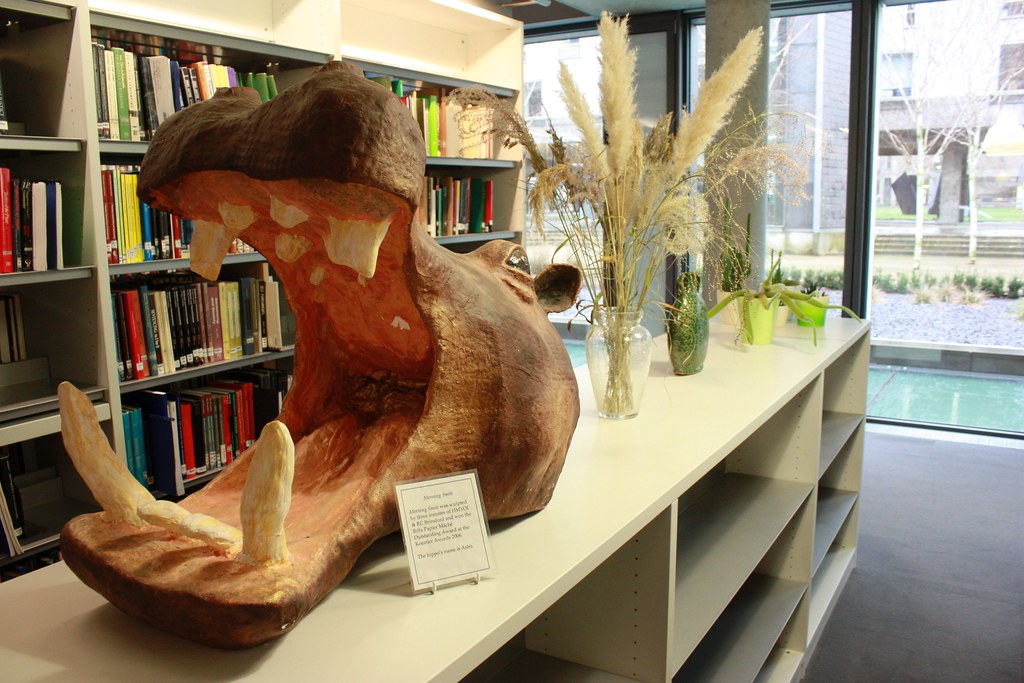 |
| Ground floor and stacks by libatcam on Flickr |
I don't know what I really expected but considering that the Radzinowicz has the 'most comprehensive criminology collection in the United Kingdom' with over 60,000 books, I knew it would be substantial. And substantial it certainly is. They have collections that range from modern day social work and prison regulations back hundreds of years to early foundations of law and order. One book I looked at related to the Gaols of Britain in 1766. The entry for Cambridge's County Gaol at Castle Hill states the number of debtors being held, the wage for the jailer and also the cost of the alcohol license he required. It also mentions the gallows in the courtyard, a reminder of this country’s capital punishment that continued right up to 1964.
What you might not expect is the large amount of artwork all through the Library created by inmates all over the country. Large numbers of drawings and painting but also some sculptures including an Egyptian bust and a Hippo called Asbo! These lend a very different feel to the library, breaking up the workspace and providing a more vibrant environment but also embedding a wider understanding of those people living by the rules and regulations shelved in the Library.
 |
| Morning Smile (Asbo the Hippo) by libatcam on Flickr |
The second was a selection of Banned Books from the Library’s collection. These books came from the old Home Office in the lead up to the creation of the Justice Department in 2007. The wide selection on display ranged from an 18th century book on flagellation, to guidebooks on Homosexuality and many novels with what would now be considered very tame sexual content. These books were either banned or books that were sent by people to the Home Office in order to get them banned. Unfortunately the number of books taken by the Radzinowicz is a tiny part of what the original collection was comprised of as the majority 'disappeared' but also there is no record of when the books came into the Library, who sent them, were they actually banned and if so when and why. This means it cannot be assessed in a way that we would undoubtedly want to do with such a collection but it is self-evident in places as to the social mind-sets of the time that considered these books outrageous and unsuitability for the public and as such forms a very valuable peek into another side of our past.
By Kevin Symonds, CLG's Secretary, and Library and Information Services Manager at MRC Cognition and Brain Sciences Unit